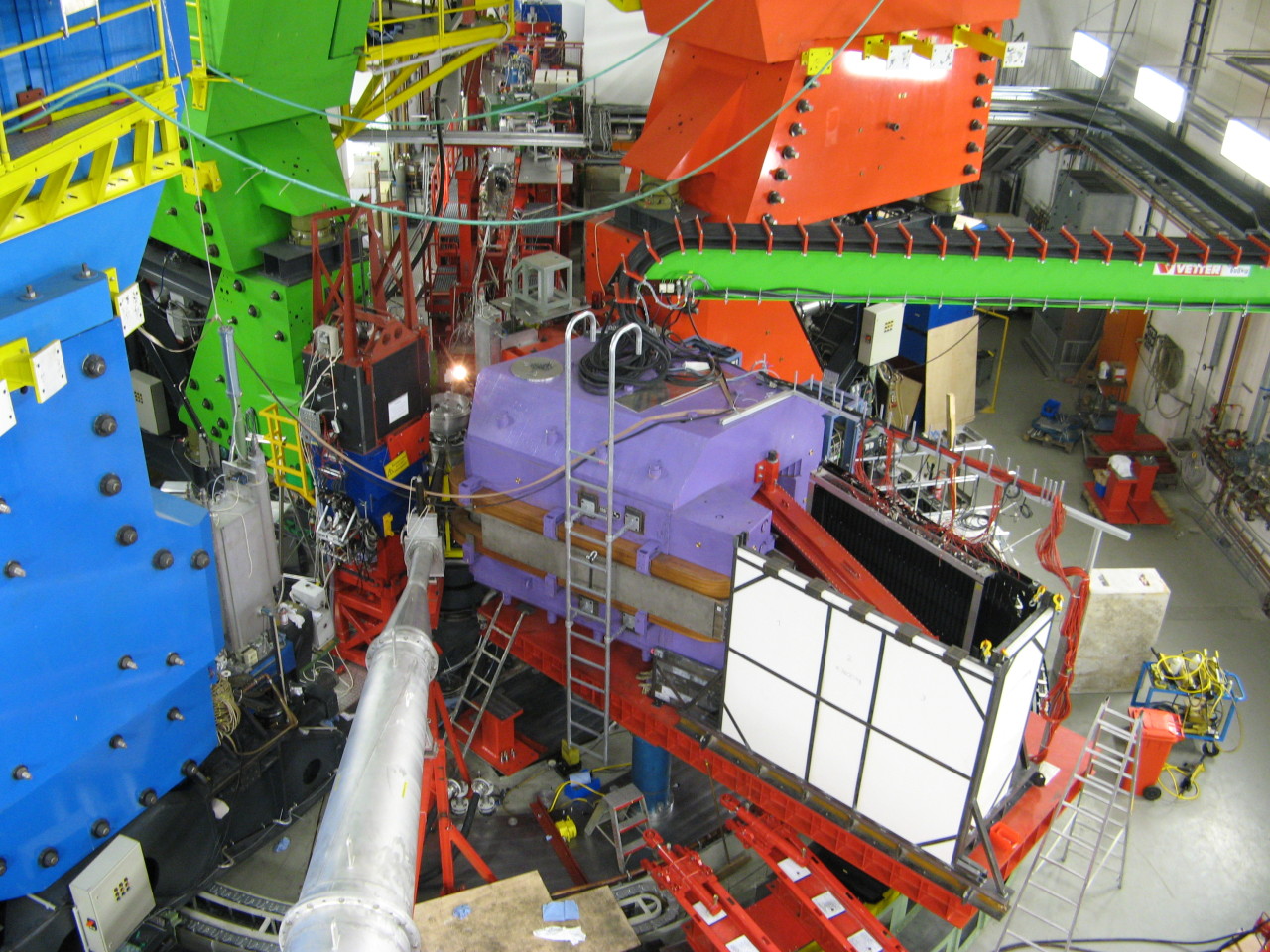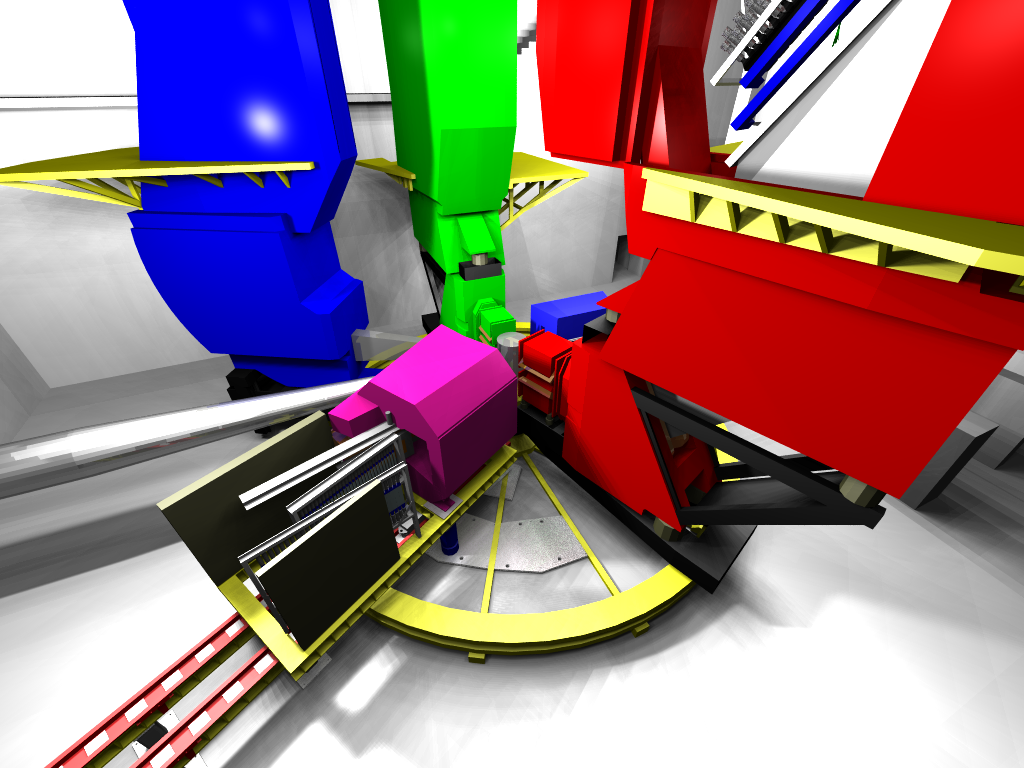In the A1 collaboration the experiments on electron scattering at MAMI are summarized. These experiments aim in particular to study the spatial structure of atomic nuclei or nuclear building blocks. For this purpose, a sample is fired at the electron beam generated by the Mainzer Mikrotron, and both the electrons scattered at the sample and any newly generated particles are detected by magnetic spectrometers.
The magnetic spectrometers work similarly to electron microscopes, but on a much larger scale: The spectrometers of the A1 collaboration are about 15 meters in size and each weighs more than 200 tons. With these devices, pulses can be determined with a resolution of better than 0.01%, the travel time of the particles is determined with an accuracy of 0.000 000 000 5 s, which allows the energy and direction of all particles involved in a nuclear reaction to be measured with extreme precision.
Quantum mechanics teaches us that, on the scale of atomic nuclei and nuclear building blocks, an electron beam can be regarded as a wave. Similar to the way we can infer the shape and size of a macroscopic object from the reflection of a water wave on a macroscopic object, we can infer the spatial structure of the objects under investigation from the intensity pattern of the reflected electrons.


